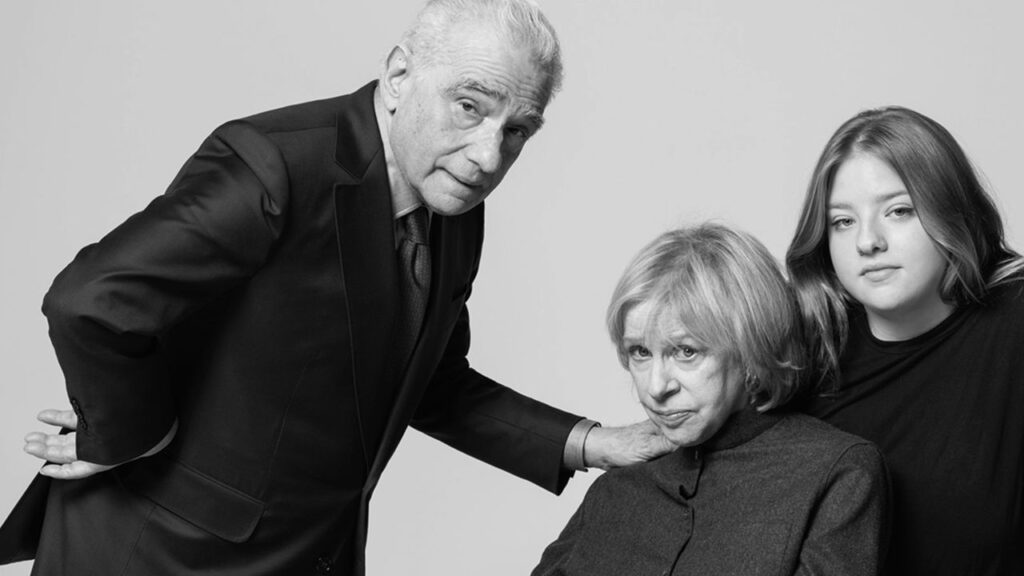One of the most surprising realities of Martin Scorsese’s success is just how often he was on the brink of losing it. The 82-year-old auteur’s setbacks occupy as much real estate as his victories do in Mr. Scorsese, a five-part docuseries covering his film career, now streaming on Apple TV.
Directed by Rebecca Miller, daughter of playwright Arthur Miller and wife of Daniel Day-Lewis (who starred in Scorsese’s The Age of Innocence and Gangs of New York), Mr. Scorsese follows the director from his rough-and-tumble adolescence in New York’s Little Italy neighborhood to his making of the 10-time Oscar-nominated Killers of the Flower Moon (2023)—touching on every set in between. Scorsese discusses his oeuvre in great detail—with assists from family, friends, and former collaborators such as Day-Lewis, Francesca Scorsese, Robert De Niro, Leonardo DiCaprio, Mick Jagger, Steven Spielberg, Jodie Foster, and Cate Blanchett, as well as Casino’s Sharon Stone and The Wolf of Wall Street’s Margot Robbie, both of whom speak candidly about working on their respective male-dominated Scorsese projects.
After exploring the Mob violence he grew up near on film, Scorsese was often reduced to his gangster dramas (Mean Streets, Goodfellas), but nearly as much of the filmmaker’s work is rooted in his Catholic religion (The Last Temptation of Christ, Silence). Even Scorsese’s otherwise secular titles ponder questions like, “Who are we? What are we, I should say, as human beings?” as he says in the series’ opening. “Are we intrinsically good or evil?… This is the struggle. And I struggle with it all the time.”
That dichotomy is reflected in some of Scorsese’s darker chapters, which range from a drug addiction during the 1970s to four divorces before his marriage to his current wife, Helen Morris, in 1999. “The problem is that you enjoy the sin!” Scorsese says in the series. “That’s the problem I’ve always had! I enjoy it. When I was bad, I enjoyed a lot of it.” Ahead, some of the most revealing moments from Mr. Scorsese.
Scorsese credits his childhood asthma with facilitating his love of cinema.
“As far back as I can remember, I always wanted to be a gangster,” Ray Liotta’s character memorably declares at the end of Goodfellas’ opening scene. But Scorsese himself actually pursued the priesthood before his love of movies took root. He grew up first in Corona, Queens, then in New York City’s Lower East Side after witnessing an altercation between his father, Charles, a Garment District worker, and their landlord. “There was an axe involved. I remember seeing an axe,” Scorsese says in the doc, without elaborating much further. “Violence was imminent all the time.”
When not braving the mean streets or finding refuge in the Catholic Church, an asthmatic Scorsese often visited air-conditioned movie theaters and engaged in people-watching from his apartment window. In the series, Scorsese even credits that particular vantage point with instilling his love of high-angle shots in movies.
“Marty’s life depended upon going to movies,” says Goodfellas and Casino screenwriter Nicholas Pileggi. “That’s where he could breathe.” Or as Spike Lee more colorfully puts it: “Thank God for asthma!”
Scorsese fantasized about destroying the rough cut of Taxi Driver after it received an X rating.
After helming the Roger Corman–produced exploitation film Boxcar Bertha (1972), his first De Niro gangster epic, Mean Streets (1973), and Ellen Burstyn’s Oscar-winning turn in Alice Doesn’t Live Here Anymore (1974), Scorsese had his major industry breakthrough with Taxi Driver in 1976—which had a fraught journey to the screen.

